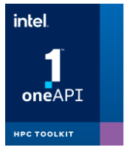oneAPI offers an open industry effort supported by over 100 organizations. oneAPI is an open, unified, cross-architecture programming model for CPUs and accelerator architectures (GPUs, FPGAs, and others). Based on standards, the programming model simplifies software development and delivers uncompromised performance for accelerated compute without proprietary lock-in, while enabling the integration of existing code.
Advancing HPC through oneAPI Heterogeneous Programming in Academia & Research
Supercharging Modern Data Centers with NVIDIA Networking Solutions

In this webinar sponsored by PNY Technologies, you will learn the benefits, functionalities, and key features of Accelerated Ethernet technology by NVIDIA Spectrum and how it delivers end-to-end innovations and synergies to optimize modern applications from core to cloud to edge.
How Well-Designed Infrastructure Can Overcome Challenges to Big Data Analytics Workloads
In this sponsored post, our friends over at Silicon Mechanics discuss how using big data analytics and predictive analytics through deep learning (DL) are essential strategies to make smarter, more informed decisions and provide competitive advantages for your organization. But these tactics are not simple to execute, and they require a properly designed hardware infrastructure.
How Aerospace/Defense Can Harness Data with a Well-Designed AI Infrastructure
In this sponsored post, our friends over at Silicon Mechanics discuss how solving mission-critical problems using AI in the aerospace and defense industry is becoming more of a reality. Every day, new technologies emerge that can simplify deployment, management, and scaling of AI infrastructure to ensure long-term ROI. There are several questions to ask yourself to ensure deploying AI workloads, and harnessing the full potential of data, in aerospace/defense is much more plausible and efficient.
The Three Variations of Supercomputing Cloud Technologies

“Cloud computing” is one of the most overloaded terms in the history of information technology. Yes, there is the NIST Definition of Cloud Computing that many will point to, but the sheer number of adaptations of models for “enabling ubiquitous, convenient, on-demand” access to computing resources knows no limit. In this sponsored post, our friends at Atos provide three major and very different types of issues and found that a common technology thread worked across the board. In fact, they also learned that while the models are different, organizations often benefit from more than one.
Lenovo HPC Powers SPEChpc™ 2021 with AMD 3rd Generation EPYC™ Processors
As a leader in high performance computing, Lenovo continually supports the Standard Performance Evaluation Corporation (SPEC) benchmarks, that would help customers make better-informed decisions for their HPC workloads. SPEChpc™ 2021 is a newly released benchmark suite from SPEC that produces industry-standard benchmarks for the newest generation of computer systems. What separates SPEChpc™ 2021 from SPEC CPU® 2017, SPEC MPI® 2007 or the other SPEC benchmark suites is that SPEChpc™ 2021 is one-of-a-kind benchmark suite which uses real-world applications that support “multiple programming models and offloading” to evaluate the performance of state-of-the-art heterogenetic HPC systems.
Accelerating the Modern Data Center – Gear Up for AI
Modern applications are transforming every business. From AI for better customer engagement, to data analytics for forecasting, to advanced visualization for product innovation, the need for accelerated computing is rapidly increasing. But enterprises face challenges with using existing infrastructure to power these applications.
Improving AI Inference Performance with GPU Acceleration in Aerospace and Defense
The aerospace/defense industry often must solve mission-critical problems as they arise while also planning and designing for the rigors of future workloads. Technology advancements let aerospace/defense agencies gain the benefits of AI, but it’s essential to understand these advancements and the infrastructure requirements for AI training and inference.
The More You Scale, the Less You Pay … No, Really
Ansys Cloud, the managed cloud service provided by Ansys and enabled on Microsoft Azure, recently announced availability of 3rd Gen AMD EPYC processors with AMD 3D V-Cache with HBv3 virtual machines (VMs). The development unites three powerful catalysts of innovation — chip development, simulation, and cloud computing — to offer a more robust, three-layered approach to computing without on-premises hardware restrictions.
Overcome Form Factor and Field Limitations with AI/HPC Workloads on the Edge
In this sponsored post, our friends over at Silicon Mechanics discuss how form factor, latency, and power can all be key limitations, but find out how key advancements in technology will allow higher performance at the edge. For this discussion, the edge means any compute workloads taking place outside of both cloud and traditional on-prem data centers.




